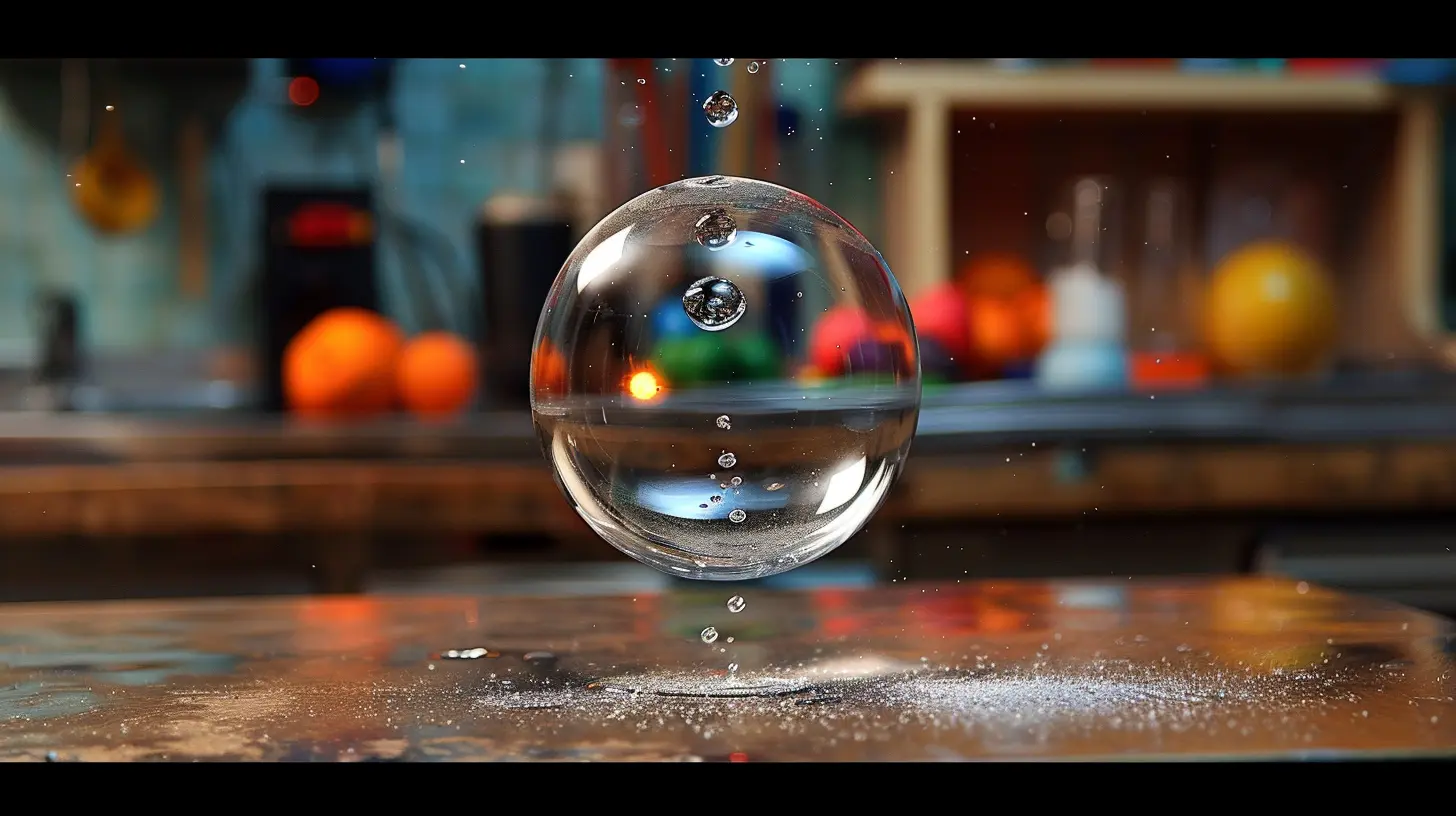Unlocking the Mysteries of Magnetism with Simple Experiments
2 October 2025
Have you ever wondered why a fridge magnet sticks but doesn’t fall off? Or why rubbing a balloon on your hair makes it cling to the wall? Magnetism is one of those fascinating forces of nature that we encounter in everyday life without even realizing it. The best part? You don’t need a fancy lab to unlock its mysteries—you can do it right at home with simple experiments!
In this article, we'll dive into the wonders of magnetism, understand how it works, and conduct a few fun experiments to see it in action.
What Is Magnetism?
Magnetism is a force exerted by magnets when they attract or repel certain materials. It all comes down to tiny particles inside atoms called electrons. When these electrons move in a particular way, they create a magnetic field.Every magnet has two poles:
- North Pole
- South Pole
And here’s the golden rule of magnetism: Opposite poles attract, while like poles repel. This is why two magnets snap together when arranged correctly but push apart when flipped the other way.
But what makes something magnetic? Well, not everything reacts to magnets. Only certain materials like iron, nickel, and cobalt have the right atomic structure to be affected by magnetic fields.
Why Should You Care About Magnetism?
Magnetism isn’t just a cool science trick—it’s used everywhere! From the tiny hard drives in computers to giant MRI machines in hospitals, magnetism plays a crucial role in modern technology. Even our Earth has a giant magnetic field that protects us from harmful space radiation. Without it, life as we know it wouldn’t exist.So, now that we've covered the basics, let’s roll up our sleeves and try some hands-on experiments!
Simple Magnetism Experiments You Can Try at Home
Ready to see magnetism in action? Here are some super cool experiments you can do with items you probably already have lying around.1. The Floating Paperclip – Defying Gravity
What You Need:- A strong magnet
- A paperclip
- A piece of string
- Tape
Instructions:
1. Tie the paperclip to one end of the string.
2. Tape the other end of the string to a table so the paperclip dangles freely.
3. Hold the magnet just above the paperclip without touching it.
4. Slowly move the magnet upward and watch the paperclip "float" in mid-air as it follows the magnet.
What's Happening?
The magnetic field of the magnet pulls the paperclip upward, counteracting gravity. The stronger the magnet, the further away you can hold it before the paperclip drops.
2. Magnetic Field Visualization – Make Invisible Forces Visible
What You Need:- A strong magnet
- A sheet of white paper
- Iron filings (you can buy them online or make your own by filing down a steel nail)
Instructions:
1. Place the magnet under the sheet of paper.
2. Sprinkle iron filings gently on top of the paper.
3. Tap the paper slightly and watch as the filings arrange themselves in curved lines around the magnet.
What's Happening?
The iron filings align along the invisible magnetic field lines, forming a pattern that represents the force surrounding the magnet. These lines show how the magnetic field extends beyond the surface of the magnet.
3. Magnetic Slime – A Gooey Science Experiment
What You Need:- ½ cup of white school glue
- ½ cup of liquid starch
- 2 tablespoons of iron oxide powder (available online)
- A strong neodymium magnet
Instructions:
1. Mix the glue and liquid starch in a bowl until you get a slime-like consistency.
2. Stir in the iron oxide powder.
3. Knead the mixture until it’s uniform and no longer sticky.
4. Bring the neodymium magnet near the slime and watch it stretch and move toward the magnet like something out of a sci-fi movie!
What's Happening?
The iron oxide particles in the slime react to the magnetic field, making the slime follow the movement of the magnet. It’s like a blob of alien goo responding to some invisible force!
4. Build Your Own Compass – Find Your Way with Magnetism
What You Need:- A sewing needle
- A small bowl of water
- A small piece of cork (or a bottle cap)
- A strong magnet
Instructions:
1. Rub one end of the needle against the magnet about 20-30 times in the same direction.
2. Carefully place the needle on top of the cork.
3. Float the cork in the bowl of water.
4. Watch as the needle slowly aligns itself north-south!
What's Happening?
When you rub the needle with the magnet, it temporarily becomes magnetized. The Earth's magnetic field then pulls the needle into alignment with the Earth's natural north and south poles, just like a real compass.
5. Magnetic Levitating Train – The Future of Transportation
What You Need:- A few ring-shaped magnets
- A pencil
Instructions:
1. Slide the ring magnets onto the pencil, making sure they all face the same direction (so they repel each other).
2. Gently push the top magnet down and then release it.
3. Watch how it hovers above the others, seemingly defying gravity!
What's Happening?
The repelling force between the like poles of the magnets keeps them floating apart. This is the same principle behind maglev (magnetic levitation) trains, which use powerful magnets to float above tracks, reducing friction and allowing for super-fast travel.
Final Thoughts: The Magic of Magnetism
Magnetism might feel like magic, but it’s all based on the laws of physics. With just a few simple materials, you can witness magnetic forces at work in ways that are both surprising and fun.From floating paperclips to self-aligning compasses, these experiments not only entertain but also deepen our understanding of how magnetism shapes our world. So grab some magnets and start experimenting—who knows what magnetic mysteries you'll uncover next?
all images in this post were generated using AI tools
Category:
Science ExperimentsAuthor:

Bethany Hudson
Discussion
rate this article
1 comments
Gwen Morales
This article beautifully simplifies complex concepts of magnetism. The hands-on experiments encourage curiosity and engagement, making science accessible and fun for everyone!
October 19, 2025 at 12:20 PM

Bethany Hudson
Thank you for your kind words! I'm glad you found the article engaging and accessible. Exploring magnetism through hands-on experiments truly makes learning enjoyable!


